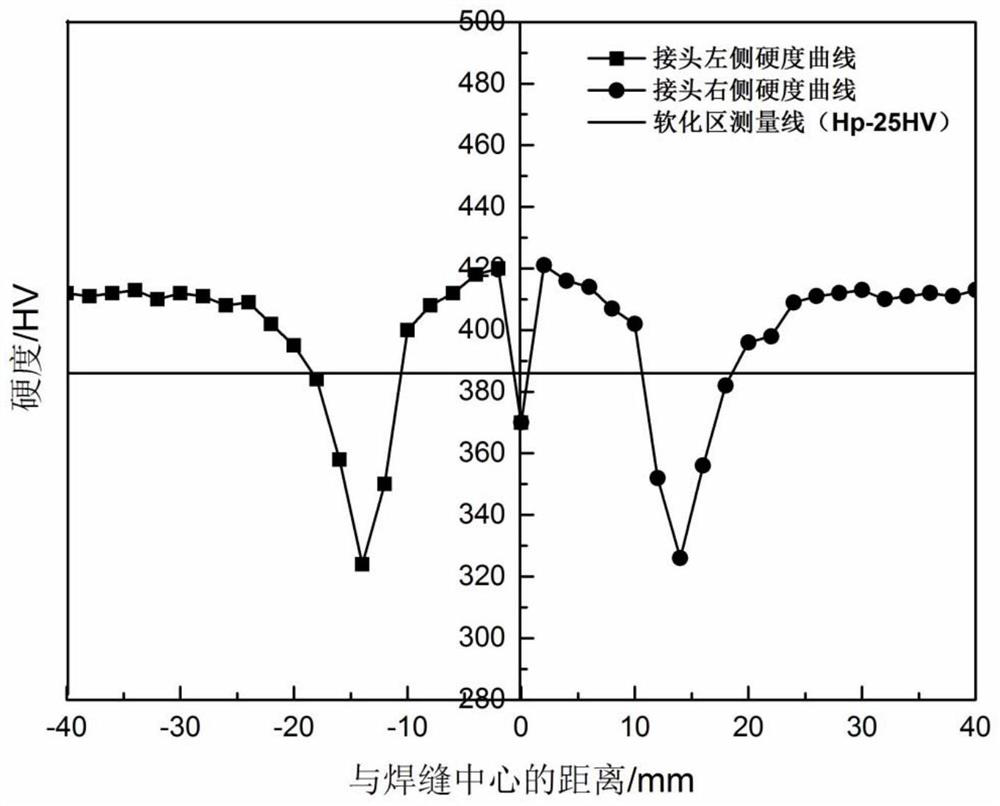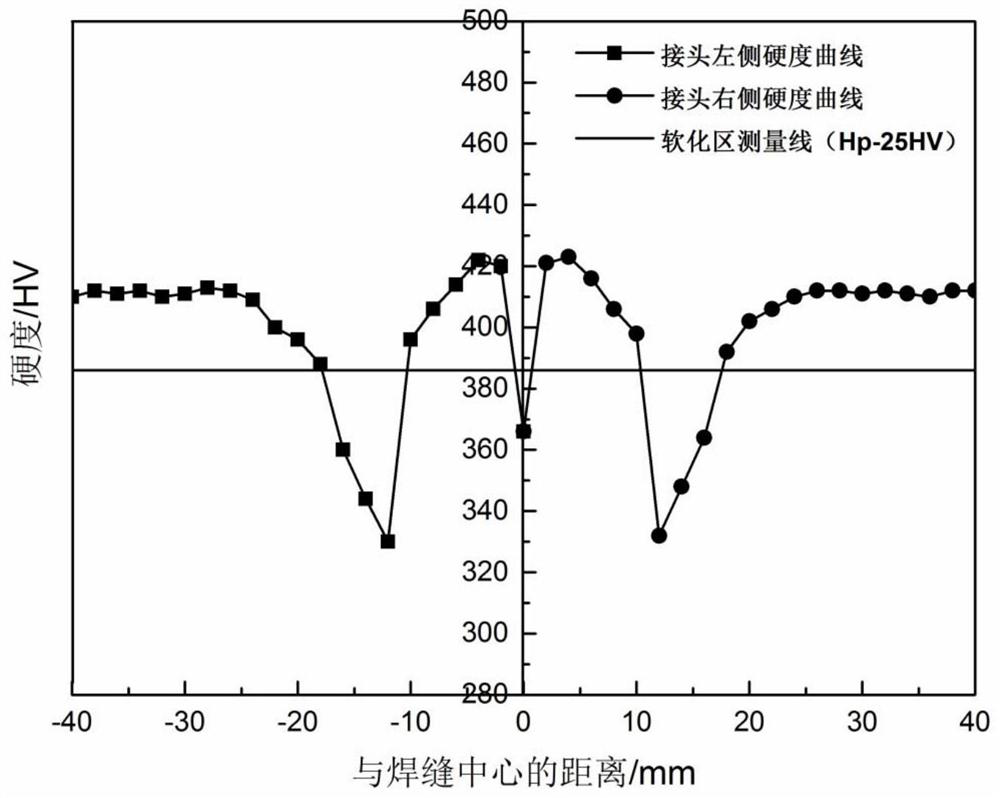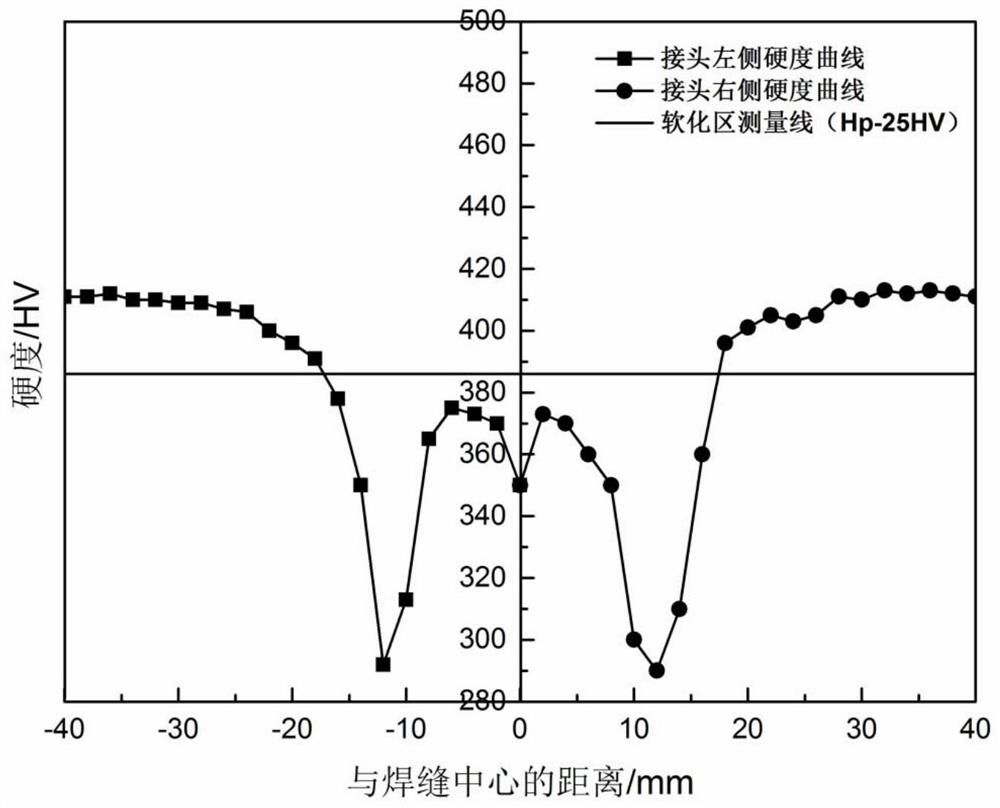A post-weld heat treatment method for 1100mpa low-alloy heat-treated rails
A post-weld heat treatment and low-alloy technology, applied in heat treatment furnaces, heat treatment equipment, furnaces, etc., can solve the problems of low heat treatment cost, poor mechanical properties of welded joints, complicated operation process, etc., to simplify the heat treatment process, improve wear, and ensure safe effect
- Summary
- Abstract
- Description
- Claims
- Application Information
AI Technical Summary
Problems solved by technology
Method used
Image
Examples
Embodiment 1
[0084] After the rail with a specification of 68kg / m has completed the upsetting and push-out during the mobile flash welding process, the welded joint is subjected to post-weld heat treatment. First, the rail joint obtained by welding with a residual temperature of 1250 °C was subjected to the first stage cooling at a first cooling rate of 7.5 °C / s to reduce the surface temperature of the rail head of the rail joint to 640 °C, and then the rail joint was cooled at 2.5 °C. At the second cooling rate of 0.40°C / s, the second-stage cooling was performed to reduce the surface temperature of the rail head of the rail joint to 450°C, and finally the rail joint was subjected to the third-stage cooling at the third cooling rate of 0.40°C / s to reduce the temperature of the rail joint to 450°C. The surface temperature of the rail head is lowered to a room temperature of 25° C., thereby obtaining a rail welded joint that has undergone post-weld heat treatment. In the post-weld heat treat...
Embodiment 2
[0091] After the upsetting and push-out during the mobile flash welding process of the 60kg / m rail, the welded joints are subjected to post-weld heat treatment. First, the rail joint obtained by welding with a residual temperature of 1200°C was subjected to first-stage cooling at a first cooling rate of 7°C / s to reduce the surface temperature of the rail head of the rail joint to 600°C, and then the rail joint was cooled to 2°C. At the second cooling rate of 0.2°C / s, the second-stage cooling was performed to reduce the surface temperature of the rail head of the rail joint to 430°C, and finally the rail joint was subjected to the third-stage cooling at the third cooling rate of 0.2°C / s to reduce the temperature of the rail joint to 430°C. The surface temperature of the rail head is lowered to a room temperature of 20° C., thereby obtaining a rail welded joint that has undergone post-weld heat treatment. In the post-weld heat treatment process, the first stage cooling is natura...
PUM
| Property | Measurement | Unit |
|---|---|---|
| tensile strength | aaaaa | aaaaa |
| hardness | aaaaa | aaaaa |
Abstract
Description
Claims
Application Information
 Login to View More
Login to View More - R&D
- Intellectual Property
- Life Sciences
- Materials
- Tech Scout
- Unparalleled Data Quality
- Higher Quality Content
- 60% Fewer Hallucinations
Browse by: Latest US Patents, China's latest patents, Technical Efficacy Thesaurus, Application Domain, Technology Topic, Popular Technical Reports.
© 2025 PatSnap. All rights reserved.Legal|Privacy policy|Modern Slavery Act Transparency Statement|Sitemap|About US| Contact US: help@patsnap.com



